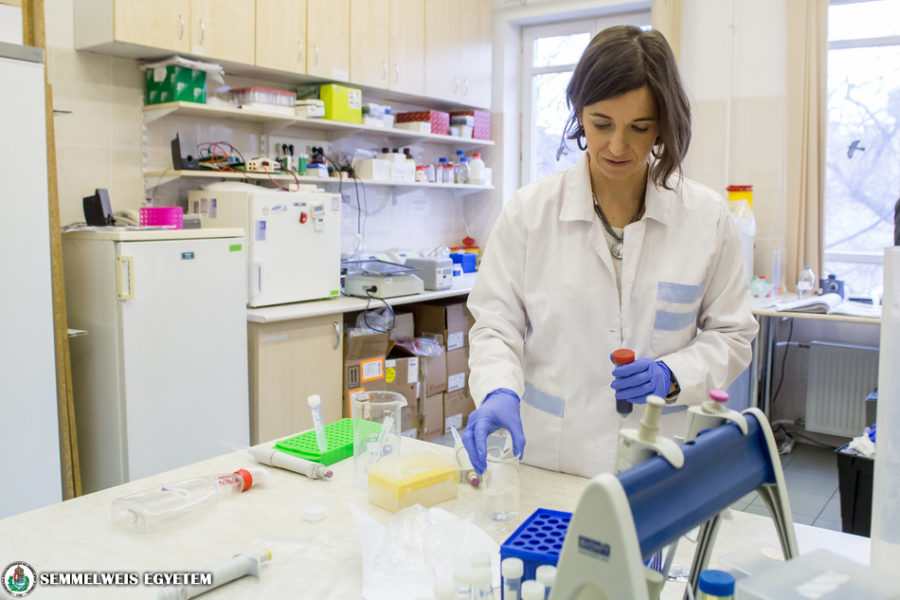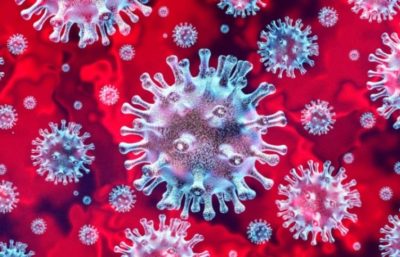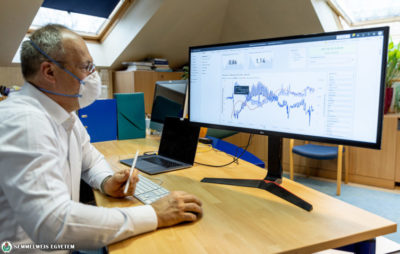Clinical trials investigating the efficiency of fluvoxamine therapy in the treatment of pulmonary fibrosis start at the beginning of November at Semmelweis University and some Hungarian COVID-19 centers. The research project led by Dr. Andrea Fekete, is carried out in the framework of the cooperation of Semmelweis University, the Hungarian Academy of Sciences and SigmaDrugs, a university spin-off company.
“COVID-19 can cause damage in the human body in two different ways: either the already existing diseases such as heart and vascular conditions, renal diseases or oncological symptoms are intensified by the coronavirus; or it triggers an extremely strong immune response from the human body”, says Dr. Béla Merkely, rector of Semmelweis University.
The latter case is casued by the so-called cytokine storm, which can result in a severe pneumonia and multiple organ dysfunctions. Fluvoxamine therapy could provide efficient support in overcoming cytokine storms and in the treatment of pulmonary fibrosis.
According to Dr. Andrea Fekete, associate professor at Semmelweis University, executive director and co-founder of SigmaDrugs biotech, the basic idea behind the treatment is simple. Previous neurobiological studies have already demonstrated that the activation of Sigma-1 receptor reduces inflammatory conditions in the brain, therefore it has a positive effect on the human body. The Sigma-1 receptor was first detected in the central nervous system in 1970. Essentially, its role was connected to brain functions: it was said to have a regulatory function for example related to memory and behaviour. The studies of the past 10-15 years have shown that this receptor can be present in other areas of the human body as well and one of its many functions is the reduction of inflammations. The research group led by Dr. Andrea Fekete at the 1st Department of Pediatrics discovered that a protective mechanism similar to that of in the central nervous system can also be identified in many organs, such as in the lungs, kidneys and the eyes. Their research results first published in 2016 suggest that Sigma-1 receptor may be a good target for renal hypoxia related drug development. It has since been patented outside of Europe as well: in the USA, Japan, China and Israel and the results have been published in several prestigious medical journals.
 “Fluvoxamine exerts its protective effect in two ways. In the acute phase of pneumonia caused by coronavirus it inhibits the cytokine storm by reducing the production of inflammation triggers. In the long run it also diminishes the production of fibrotic tissue caused by pneumonia, therefore the lungs are damaged in a smaller surface and the breathing surface remains larger”, said Dr. Andrea Fekete.
“Fluvoxamine exerts its protective effect in two ways. In the acute phase of pneumonia caused by coronavirus it inhibits the cytokine storm by reducing the production of inflammation triggers. In the long run it also diminishes the production of fibrotic tissue caused by pneumonia, therefore the lungs are damaged in a smaller surface and the breathing surface remains larger”, said Dr. Andrea Fekete.
It is expected that the duration of respiratory complications caused by COVID-19 will shorten as a result of the therapy.
“The research team reacted to the situation caused by the pandemic in a most rapid and creative way”, said Dr. Attila Szabó, head of the 1st Department of Pediatrics and Vice-Rector for Clinical Affairs at Semmelweis University.
The team members examined whether fluvoxamine could be efficient in the therapy of acute pneumonia caused by COVID-19 and in the therapy of long-term complications. The multidisciplinary research team consisting of medical doctors, chemists, bio-engineers and biologists (senior members: Dóra Balogh, Judit Hodrea, Ádám Hosszú) performed the necessary animal experiments at a record speed. Based on the conclusive results, the National Institute of Pharmacy and Nutrition gave permission to begin clinical trials in an accelerated procedure.
The clinical trials, involving 100 hospitalized patients of moderate health conditions will start at Semmelweis University in November with a follow-up period of one year. The patients will be provided with medication containing fluvoxamine as part of their hospital treatment, which they will continue to take in their homes for a certain amount of time. The clinical research, which costs about half a billion HUF, is aided by private biotech investors (Attila Várkonyi, Csaba Lantos, Ernő Duda and Csaba Rekeczky) in addition to significant governmental support and the university’s own resources.
“In the history of Hungarian drug research it is very rare for a Hungarian patent to reach phase 2 clinical trials, where the drug is applied in human patients”, said Dr. Andrea Fekete.
She and her team members hope that the entire process from basic research to clinical implementation will be realised with the exclusive cooperation of Hungarian researchers and supporters and the new therapy could help in the recovery of COVID-19 patients.
Photo: Attila Kovács – Semmelweis University
Translation: Katalin Illés-Romhányi


